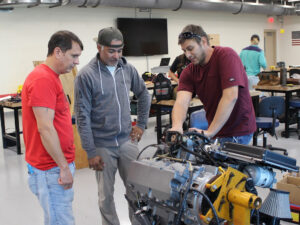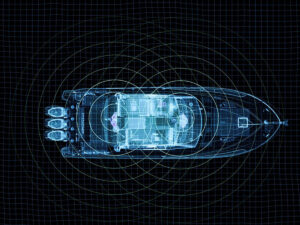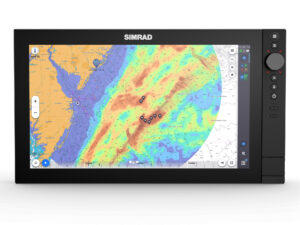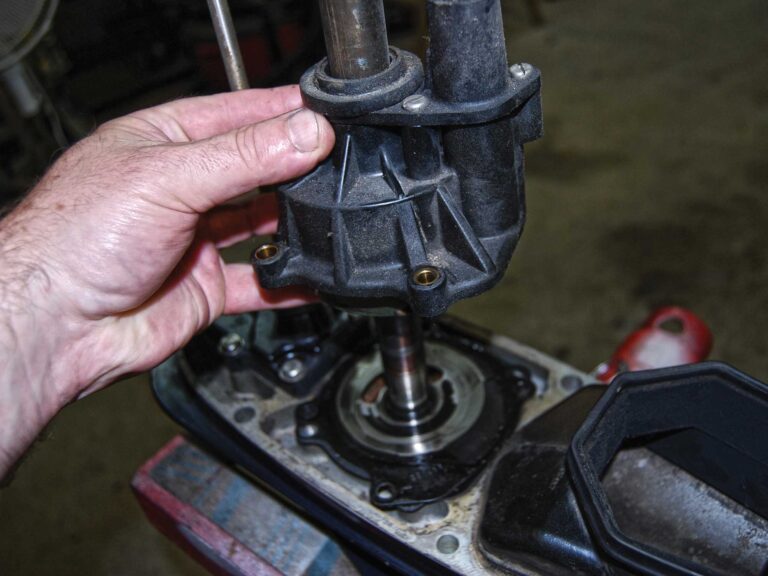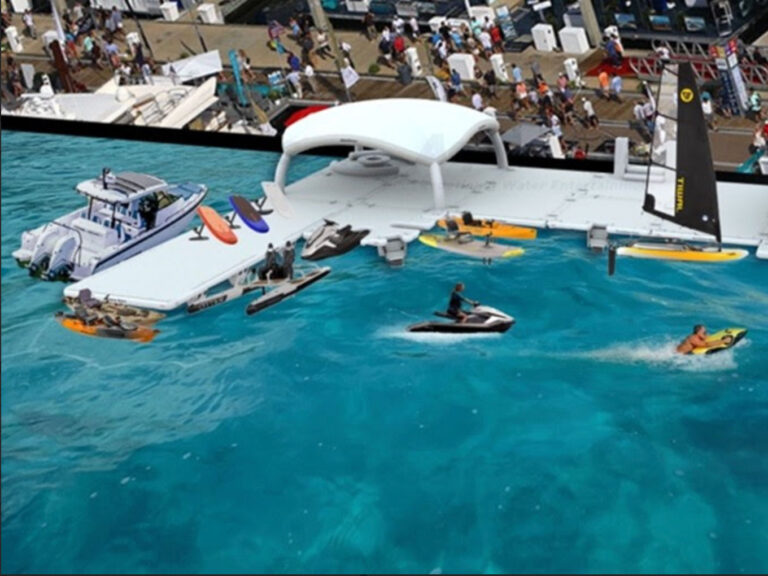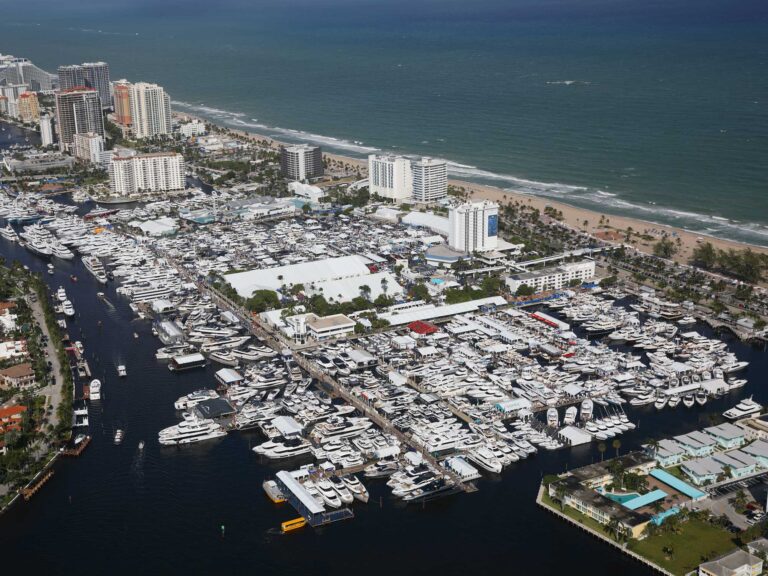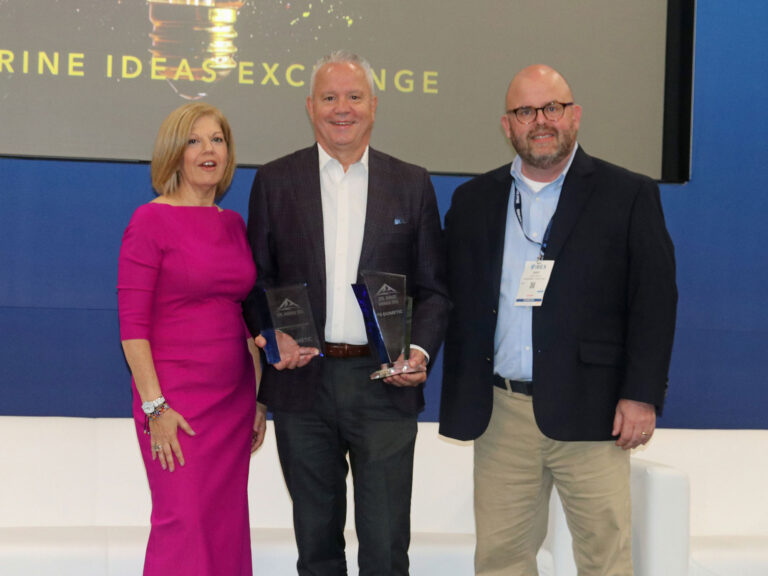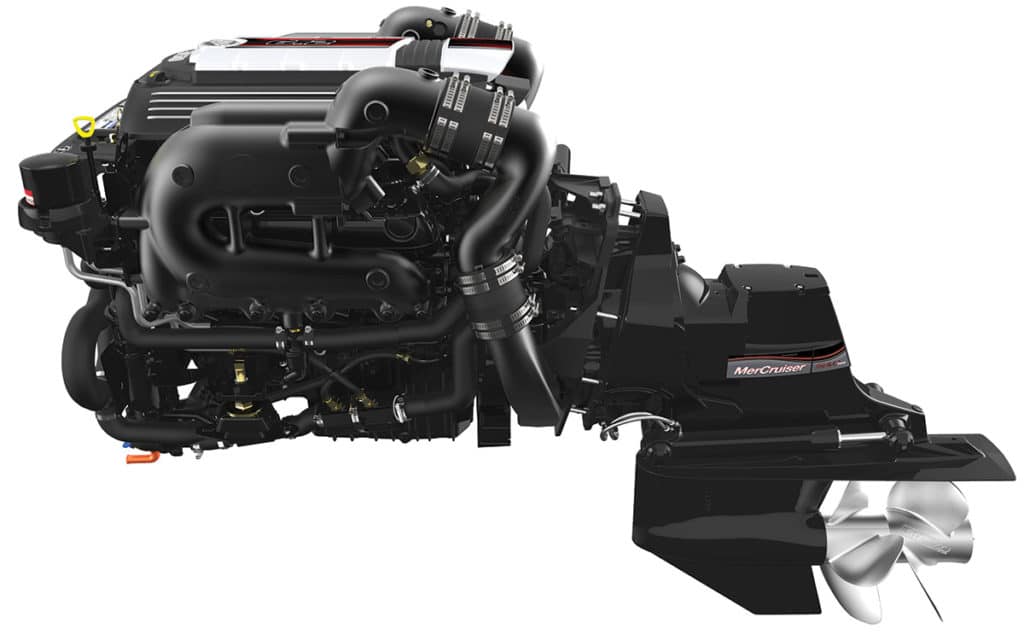


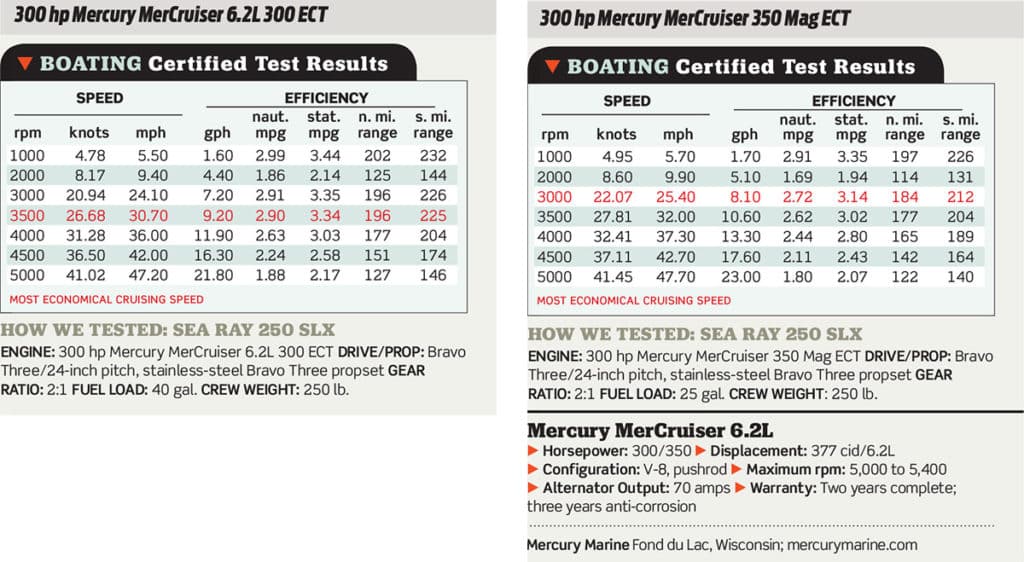
This isn’t the first time a marine-engine company has produced a purpose-built engine specifically for sterndrive and inboard applications (remember the MerCruiser 470?). But by and large, Mercury Marine and others have always used marinized General Motors and sometimes Ford engines. The new MerCruiser 6.2L that I tested is a completely new animal from the oil pan up.
New Evolution
Available as either a 350 or 300 hp engine, the 6.2L boasts great intake noise reduction and better efficiency. Merc engineers designed a new air intake resonator and combined it with a simple 180-degree change in the air intake for the throttle body EFI. Facing the intake aft eliminates a large portion of intake and engine noise, especially when the throttle is cracked. Simple!
A new scrolled intake manifold with long intake runners smooths airflow as it enters the engine to mix with fuel, upping torque and boosting power. The large displacement coupled with this improved intake delivers quicker planing, better load carrying and superior towing ability.
New engine mounts reduce vibration and cockpit noise level. To reduce corrosion effects, a saltwater-resistant system was developed starting with a combination of cast iron, composites and marine alloys for use wherever the engine encounters raw water.
A number of new user-friendly features combine to help techs and consumers alike. A new “maintenance center” located right at the top front of the engine features an easy-access oil fill and filter, with a nice lip around the base of the filter to catch spills when changing filters (long overdue). The step-by-step maintenance guide displayed is complete to my eye, plus there is a QR code one can scan for DIY information. A season-extending water-drain system makes draining the block for winter easy, yet allows quickly setting it up for a “last blast” should the fall weather warm up enough for a quick boat ride. Additionally, the traditional 20-hour service has been eliminated, saving time and cost.
Merc designers didn’t forget style when building this new power plant, and the result is a clean and tough-looking engine.
Getting To It
For comparison’s sake, I ran two Sea Ray 250 SLX models, one powered with the venerable 300 hp 350 Magnum and the other powered by the new 300 hp 6.2. Performancewise, the Sea Ray sterndrive packages were very close, but the new engine provided a couple of distinct advantages. With the same Bravo Three drive and propset, the new engine was a bit more efficient, achieving 3.3 miles per gallon at best cruise speed compared with the 350 Mag’s 3.1 mpg.
Also, that best cruise speed was attained at a faster pace: 3,500 rpm and almost 31 miles per hour vs. 3,000 rpm and 25 mph for the Magnum. While at most rpm levels the fuel consumption was close, at full bore the new 6.2L drank just shy of 22 gallons per hour while the Magnum used 23. Top speed was almost identical for both with a half-mile-per-hour advantage going to the Magnum; however, acceleration honors clearly went to the new 6.2L, as it hit 20 mph in 5.75 seconds versus the Magnum’s 6.89, and 30 mph in 8.5 seconds compared with the Magnum’s 9.95 seconds. That’s a noticeable difference in the seat-of-the-pants impression, not just on a stopwatch.
Also noteworthy were the convenience features of the 6.2 that made driving it so nice. First, Merc’s adaptive speed control (ASC) automatically applies just enough throttle in turns so the boat doesn’t lose speed and fall off plane. This is especially nice when turning in tight quarters (like on a narrow river) or when retrieving fallen skiers. As a result, the driver doesn’t have to compensate by making constant throttle-setting changes.
Takeaways
Optional freshwater cooling and SeaCore sterndrive protection treatment give much-needed added assurance and longer life in saltwater environments. Rather than raw seawater, the freshwater cooling system uses a heat exchanger and captive coolant (like your tow vehicle does) to circulate through the engine to maintain operating temperature. To go with it, SeaCore is a hard coating that penetrates and alters the internal aluminum cooling passages to prevent salt deposits and eventual corrosion.
Lastly, the 6.2L is also available with Axius joystick piloting, which makes docking and slow-speed maneuvering much easier for pros and novices alike.
Warranty on the new 6.2 is two years, with three years of anti-corrosion protection. Currently Merc offers a deal featuring three more years of extended coverage.

